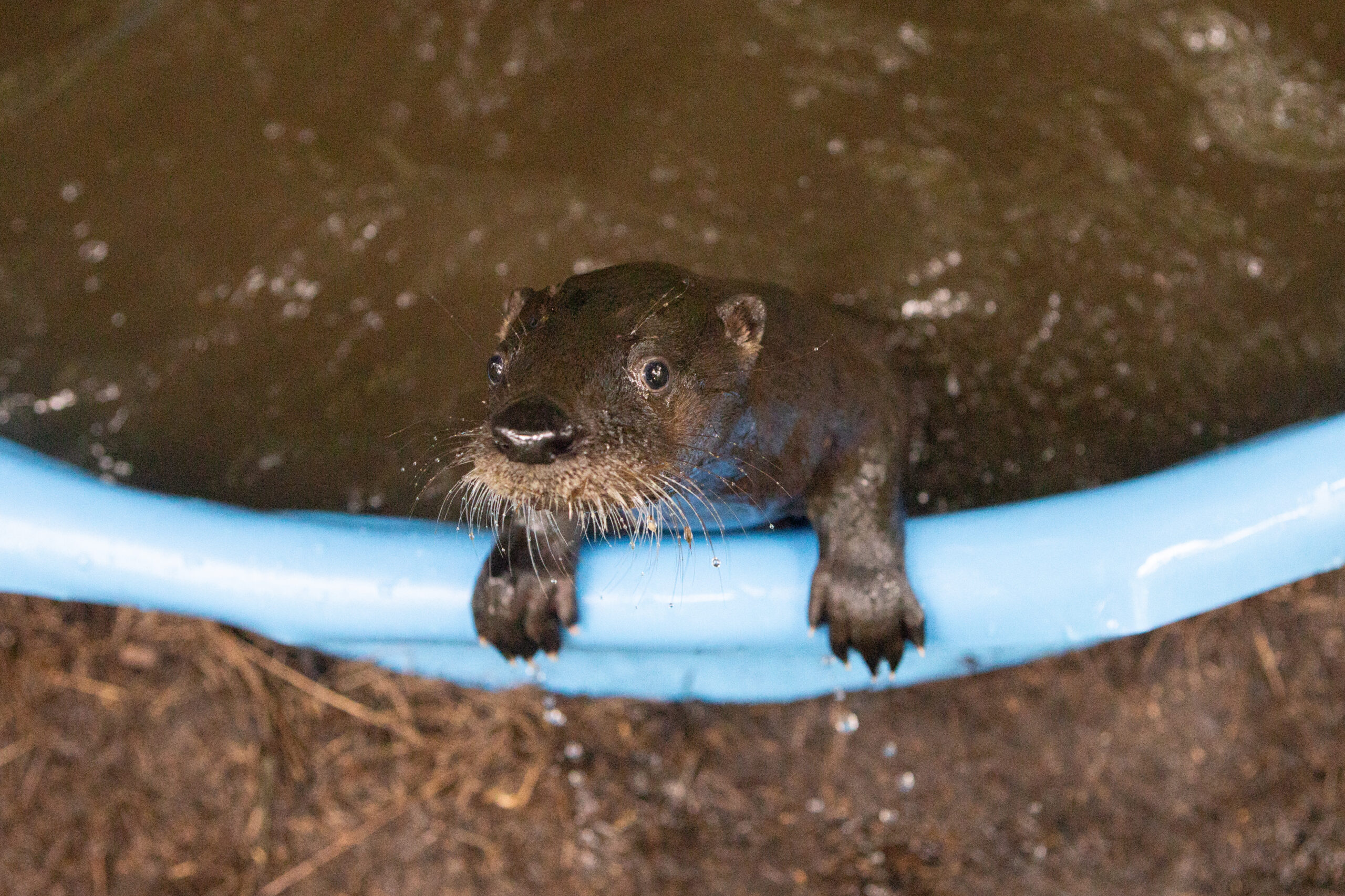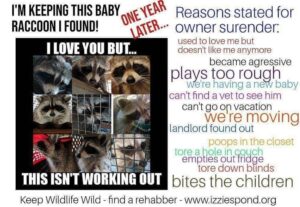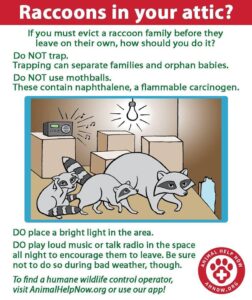
What To Do If You Find an Injured Animal
The first thing to do is locate a SC Wildlife Rehabilitator using this link – www.animalhelpnow.org
We also suggest you visit the South Carolina Dept. of Natural Resources website for information and instructions regarding urgent situations involving certain animals.
Emergencies: 1-800-922-5231
Nuisance Wildlife: (843) 953-5291
Nuisance Alligator: (843) 546-8119
Injured Raptors: (843) 971-7474
Whale-Dolphin Stranding: (843) 820-0612
Sea Turtles: (843) 953-9015
You can also refer to the information below about what to do if you come across some of the more common wildlife of our area that may be injured or abandoned. This information is very helpful and can point you in the right direction to seek help if necessary. This information was graciously shared, with their permission, by Carolina Wildlife Center in Columbia, SC.
Every now and then we do get a positive test result with a raccoon for rabies but you are more likely to see a raccoon with distemper. Each disease has a lot of the same symptoms except for the aggression with rabies. With distemper, you’ll see a very thin, runny nose, goopy eyes and a weak raccoon. The easiest way is to determine if it’s distemper or rabies is to look at their eyes. If they are green, it is distemper. The green is caused by mineral deposits caused specifically by the virus. We get a lot of these cases. People find them on their doorsteps and panic but they are not much different than our domestic pets. When they get sick they look for help. Unfortunately, it’s usually too late to help them. Distemper and parvo are not raccoon diseases even though we do see it a lot in them. These are cat and dog diseases. Our raccoon kits get vaccinated for both cat and dog diseases while with us before they are released.
Some people call us concerned whether or not they should bring a found fawn to us. The first thing to do is look at the ears. Are they straight? Or are they crumpled? Was the deer laying down or standing up?
If the ears tips are crumpled and it was standing up and crying it means that the fawn is dehydrated and mom is gone.
The baby needs help!!!
Fresh goats milk is a wonderful alternative to deer milk, however if you are in an area without milk goat farmers and a milk replacer is your only option NEVER feed the fawn ANYTHING but unflavored Pedialyte. The best thing is to try and find a rescue right away to take the fawn.
There are other tips on the pamphlet below to help you determine if a fawn is in need of assistance.
You can use this link to find a local rescue. www.animalhelpnow.org
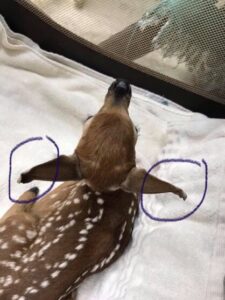
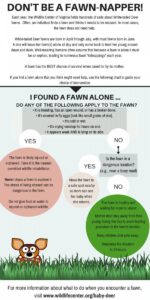
We get a lot of calls from people about seeing raccoons during the day. It’s not as uncommon to see them during daytime hours as most people think. Nursing moms are out during the day a lot to eat. When their babies are a few weeks old they start teaching them during the daytime, when their predators aren’t out. The old story about a raccoon being out during the day has rabies is just that. A story.
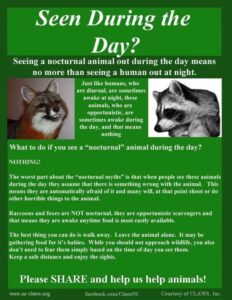
- “If we can teach people about wildlife, they will be touched. Share my wildlife with me. Because humans want to save things that they love.” -Steve Irwin
Alerts Pertaining to Wildlife in our Area
NEW POISONS AT CONSTRUCTION SITES
Recently we have noticed wildlife brought to us that show signs of being poisoned but don’t have the typical symptoms or reactions we are accustomed to seeing. After doing a little research we think that construction companies may be using a different type of poison to get rid of moles at their building sites and as other wildlife walk through the site they pick it up on their feet. When the wild life clean their feet they are then subjected to this poison as collateral damage. We do not have proof of this but we’ve seen enough cases to look into it to find out what is causing this.
